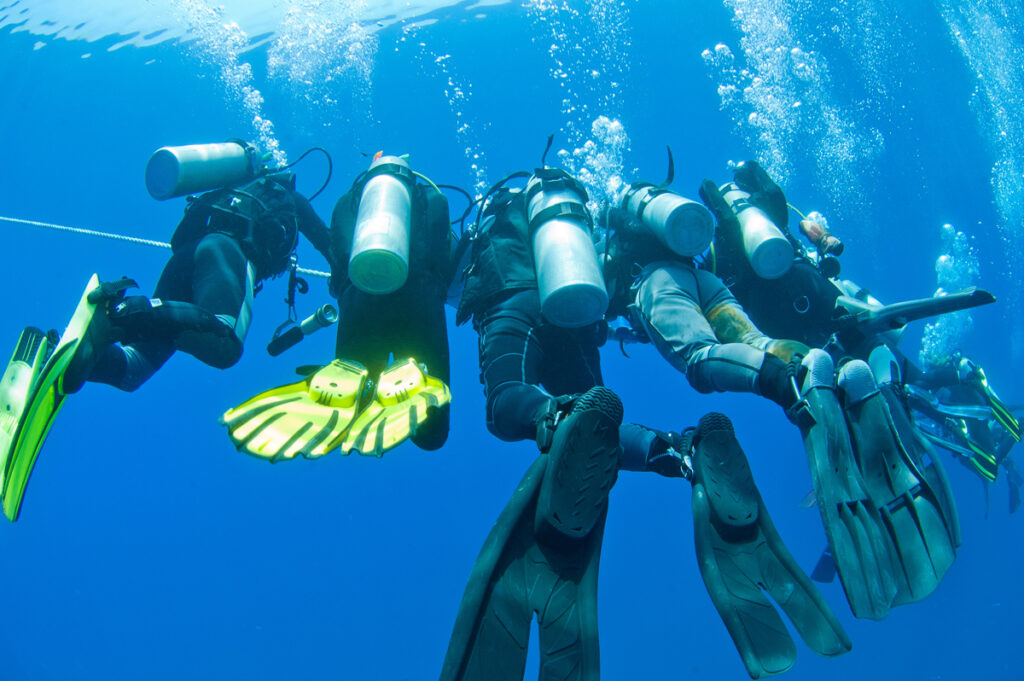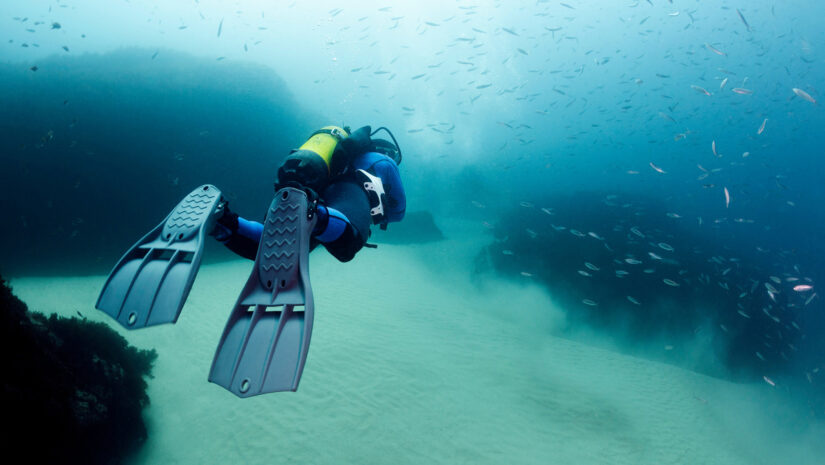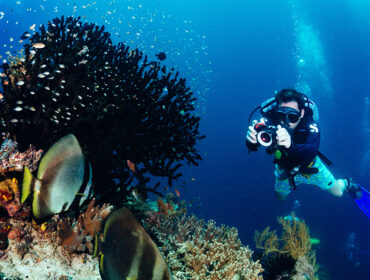Fins are an essential part of scuba diving gear, providing propulsion, efficiency, and control underwater. Choosing the right pair can make a significant difference in comfort, energy consumption, and maneuverability during a dive. When do we ask the question of split fins vs. paddle fins? Which is best? We need to consider a few factors. Split fins and paddle fins are two of the most commonly debated options among the fin designs available. Each type has its own advantages, and the right choice ultimately depends on your diving style, experience level, and personal preference. Let’s take a look at the pros and cons of both to help you make the best decision.
Why Fins Are Essential for Scuba Diving
Unfortunately, humans can’t move quite as efficiently under the water as our fishy friends do. Without fins, divers would struggle to generate the propulsion needed to move forward, maintain stability, and counteract currents. Fins increase the surface area of the feet, allowing divers to push against the water with minimal effort. This efficiency is crucial for conserving energy and air while diving, enabling longer and more enjoyable underwater experiences.
Fins also play a vital role in maneuverability. The ability to change direction smoothly, hover in place, and make minor adjustments to positioning is essential in many diving situations, such as wreck penetration, navigating through tight spaces, or observing marine life without disturbing the environment. A well-chosen pair of fins enhances a diver’s overall comfort and control, making each dive safer and more enjoyable. Let’s break down the advantages and disadvantages of each type, split fins vs. paddle fins, to help you decide which will work best for you.

Split Fins: Efficiency and Ease
Split fins are designed with a slit down the middle, creating two separate blades. This design allows water to flow between the blades, reducing resistance and making kicks feel lighter. The primary advantage of split fins is their efficiency; they allow divers to move through the water with less effort, making them an excellent choice for those who want to minimize leg fatigue and air consumption.
The mechanics behind split fins mimic the movement of a propeller, channeling water with each kick. This means that even with a relaxed flutter kick, divers can achieve decent propulsion without straining their legs. For those who prefer effortless movement, split fins can be a game-changer, especially on long dives where endurance is key.
Split fins are particularly well-suited for recreational divers who enjoy leisurely, current-free dives. They are also a great option for those who may have knee or ankle issues. The reduced strain on the legs helps prevent discomfort and cramping. However, split fins may not be the best choice for all divers. They lack the ability to generate powerful thrust, making them less effective in strong currents or situations that require quick bursts of speed. Technical divers or those who dive in demanding conditions may find split fins limiting when trying to maintain control in challenging environments.
Paddle Fins: Power and Precision
Paddle fins, sometimes referred to as traditional or blade fins, consist of a single, solid piece of material without any splits or vents. This design provides maximum power with each kick, making them ideal for divers who need strong propulsion and control. Paddle fins excel in a variety of diving conditions, from calm waters to strong currents, as they allow the diver to generate more force with each movement.
One of the biggest advantages of paddle fins is their versatility. They are highly responsive to different finning techniques, such as the frog kick, back kick, and helicopter turn, all of which are essential for technical divers, cave divers, and wreck divers who need precise control over their movements. Paddle fins also provide better maneuverability in confined spaces, allowing divers to navigate through narrow passages with greater ease.
Because paddle fins require more effort to use, they are often favored by experienced divers who have developed strong leg muscles and efficient finning techniques. They demand more energy compared to split fins, which means divers using paddle fins may experience increased fatigue on long dives if they are not accustomed to the additional effort. However, for those who prioritize power and adaptability over ease of movement, paddle fins are an excellent choice.

Split Fins vs. Paddle Fins: Which Type of Fin is Best for You?
The decision between split fins and paddle fins largely depends on the type of diving you do and your personal preferences. Recreational divers who prioritize comfort, reduced exertion, and air efficiency will likely appreciate the benefits of split fins. These fins allow for a relaxed, effortless finning motion that reduces strain. This makes them them a great option for those who want to conserve energy on leisurely dives.
On the other hand, divers who frequently encounter strong currents, engage in technical diving, or require precise maneuverability will benefit from the power and responsiveness of paddle fins. While they require more effort, the ability to control movement and generate thrust makes them indispensable for more demanding dive environments.
Experience level also plays a role in determining the best fins for an individual diver. Beginners may find split fins easier to use, as they require less effort and allow for more comfortable movement underwater. However, as divers gain experience and develop stronger finning techniques, they may appreciate the increased control and versatility that paddle fins provide.
Ultimately, there is no definitive answer as to which fin type is superior; it comes down to what suits your diving style, physical ability, and personal preference. Some divers even choose to own both types, using split fins for relaxed tropical dives and paddle fins for more challenging conditions. The best way to determine the right fins for you is to try both and see which feels more natural and effective in the water. By selecting fins that match your diving needs, you’ll enhance your underwater experience, making each dive more enjoyable and efficient.






